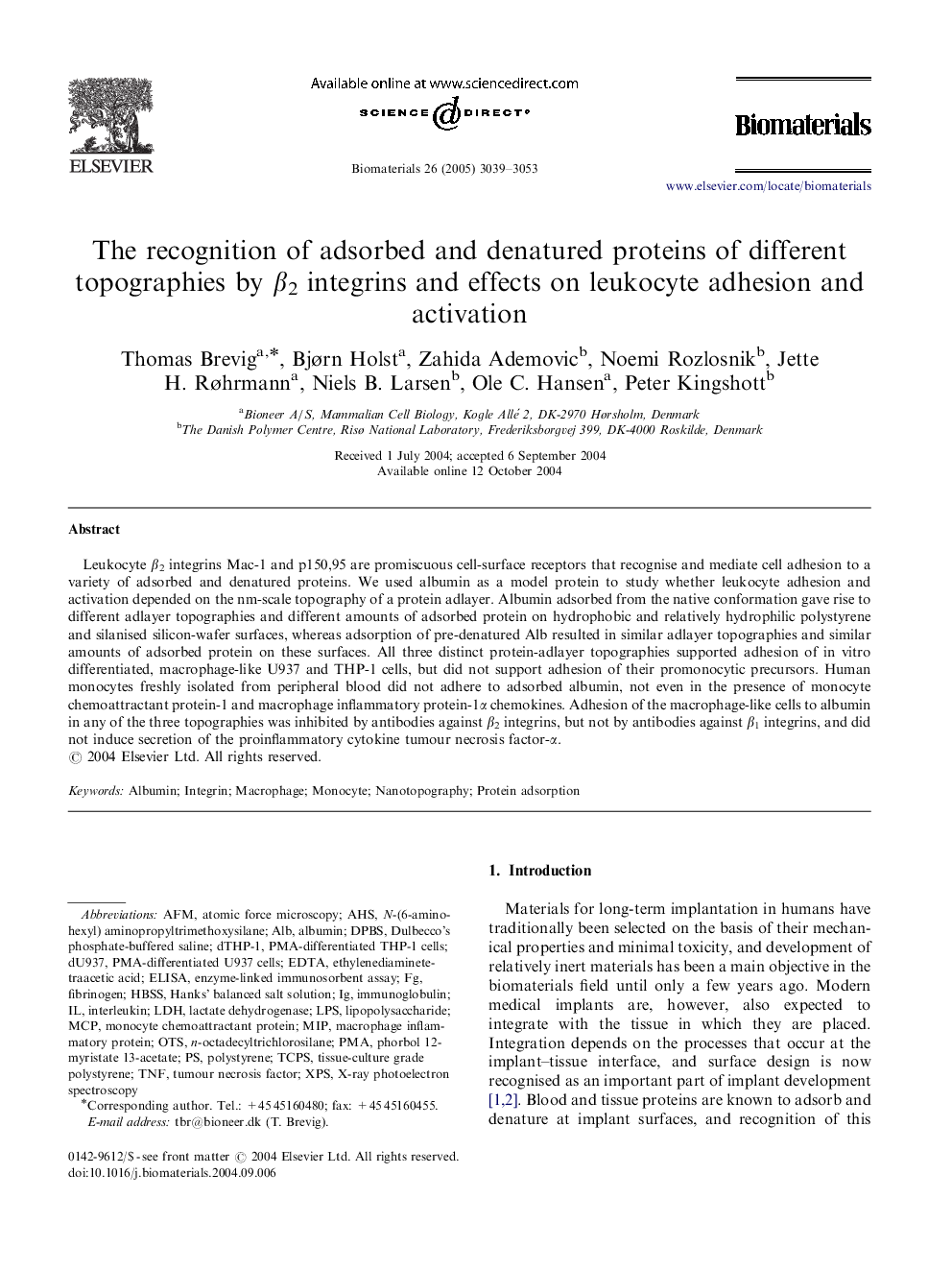| Article ID | Journal | Published Year | Pages | File Type |
|---|---|---|---|---|
| 12253 | Biomaterials | 2005 | 15 Pages |
Leukocyte β2 integrins Mac-1 and p150,95 are promiscuous cell-surface receptors that recognise and mediate cell adhesion to a variety of adsorbed and denatured proteins. We used albumin as a model protein to study whether leukocyte adhesion and activation depended on the nm-scale topography of a protein adlayer. Albumin adsorbed from the native conformation gave rise to different adlayer topographies and different amounts of adsorbed protein on hydrophobic and relatively hydrophilic polystyrene and silanised silicon-wafer surfaces, whereas adsorption of pre-denatured Alb resulted in similar adlayer topographies and similar amounts of adsorbed protein on these surfaces. All three distinct protein-adlayer topographies supported adhesion of in vitro differentiated, macrophage-like U937 and THP-1 cells, but did not support adhesion of their promonocytic precursors. Human monocytes freshly isolated from peripheral blood did not adhere to adsorbed albumin, not even in the presence of monocyte chemoattractant protein-1 and macrophage inflammatory protein-1α chemokines. Adhesion of the macrophage-like cells to albumin in any of the three topographies was inhibited by antibodies against β2 integrins, but not by antibodies against β1 integrins, and did not induce secretion of the proinflammatory cytokine tumour necrosis factor-α.
